This fact sheet, released at the 2024 Employee Ownership Ideas Forum, examines what message types, business characteristics, and business owner characteristics influence responsiveness about employee ownership as a succession plan.
Recent research by UpSkill America and the Institute for Corporate Productivity (i4cp) has found that only 25% of the HR leaders who took part in a December 2023 i4cp survey perceived workforce development as a strength of their organization, and just 9% of more than 100 private and public company board directors surveyed indicated they were very confident in their company’s ability to effectively upskill its employees for the future. Read the brief to learn more about next practices in upskilling, including internal training, apprenticeship, and tuition assistance that will help any organization to be more productive and resilient for the future.
This issue brief reviews the history and current state of job design, highlights the benefits workers and businesses receive when jobs are designed with worker well-being in mind, and notes emerging issues and practices in job design related to technology, work-based learning, and employee ownership. We hope this brief sparks new thinking and conversations about how we can all encourage and contribute to designing work and workplaces that promote quality jobs.
This research brief and landscape analysis focuses on pervasive racial disparities in elements of job quality (e.g., pay, health & safety, adequate hours) and some of the causes behind them. The authors pull together research on established laws, institutional practices, and cultural norms (e.g., occupational segregation, nonstandard work arrangements like the independent contractor classification, hiring discrimination) to create a cohesive narrative outlining how these structures have resulted in systemic disadvantages and discrimination for workers of color, particularly Black workers. These racial disparities not only persist today but were magnified during the ongoing COVID-19 and resulting racial reckoning. Individuals involved in work influencing policy decisions and institutional practices to improve labor market opportunities for workers of color may find this resource helpful.
This brief provides a framework to help HR leaders design benefits programs aimed at improving employees’ financial health, a common equity concern and component of job quality. The guidance offered centers equity approaches such as broadening access to supports and targeting outreach efforts to financially vulnerable groups. Employers who are interested in embedding a DEI lens into the design of their benefits programs and closing financial health gaps among their workforce may find this resource helpful. Workforce development and worker advocacy professionals may also want to share this with their employer networks.
The Voices from the Frontline initiative produced this brief to elevate the conversation around job quality in the workforce development field and what a focus on job quality for frontline workforce professionals could look like in practice. In addition to quantitative measures such as wages, the authors note that feeling a sense of purpose and ownership over one’s work can be beneficial for workforce professionals and the workers they serve. This publication has applications for workforce development organizations as they work to assess and improve their own internal job quality metrics.
This fact sheet displays the disproportionate effect technological change may have on Black workers and presents potential benefits that effective training programs could have on Black communities. This resource is useful for practitioners seeking to design training programs that center equity.
This brief describes a strategy that helps connect young adults to “now jobs” that address their immediate income needs while continuing to prepare them for long-term career opportunities.
This policy brief is designed to inform the development of paid family and medical leave policies that can reduce inequalities for workers. It provides guidance on specific elements of paid leave policies such as ideal duration, eligibility requirements, and outreach strategies. While the primary audience for this tool is policymakers, it could also be useful for businesses who are crafting or re-shaping their paid leave policies or for providers advising businesses and policymakers.
This brief outlines some key metrics to consider when designing paid family and medical leave programs. These insights are drawn from the National partnership for Women and Families’ research, consultations with organizations that work with low wage workers, and experiences providing technical assistance to advocates and policymakers. The brief focuses on seven main aspects: setting the benefit amount and duration, eligibility requirements to access paid leave, definitions of “employee” and “employer”, definition of “family member”, waiting period before accessing paid leave, job and benefits protection while receiving family and medical leave insurance benefits, and public education and outreach. This resource can be particularly helpful for policymakers, advocates, researchers, and practitioners.
